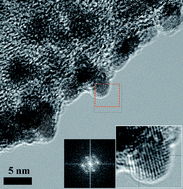Diffusion-limited reduction of organometallic compound on carbon nanofiber mat for catalytic applications†
Abstract
We propose a simple and efficient method of synthesizing highly electrocatalytic

* Corresponding authors
a
Sungkyunkwan Advanced Institute of Nanotechnology, Sungkyunkwan University, Suwon, Korea
E-mail:
leeyoung@skku.edu
Fax: +82 31 290 5954
Tel: +82 31 299 6507
b Department of Civil and Environmental Engineering, University of Pittsburgh, PA, USA
c
Department of Physics, Department of Energy Science, Sungkyunkwan Advanced Institute of Nanotechnology, Sungkyunkwan University, Suwon, Korea
Fax: +82 31 290 5954
Tel: +82 31 299 6507
We propose a simple and efficient method of synthesizing highly electrocatalytic

 Please wait while we load your content...
Something went wrong. Try again?
Please wait while we load your content...
Something went wrong. Try again?
N. T. Xuyen, D. P. V. Sanchez, T. H. Kim, H. I. Park, M. Yun and Y. H. Lee, J. Mater. Chem., 2010, 20, 5468 DOI: 10.1039/C000654H
To request permission to reproduce material from this article, please go to the Copyright Clearance Center request page.
If you are an author contributing to an RSC publication, you do not need to request permission provided correct acknowledgement is given.
If you are the author of this article, you do not need to request permission to reproduce figures and diagrams provided correct acknowledgement is given. If you want to reproduce the whole article in a third-party publication (excluding your thesis/dissertation for which permission is not required) please go to the Copyright Clearance Center request page.
Read more about how to correctly acknowledge RSC content.
 Fetching data from CrossRef.
Fetching data from CrossRef.
This may take some time to load.
Loading related content
